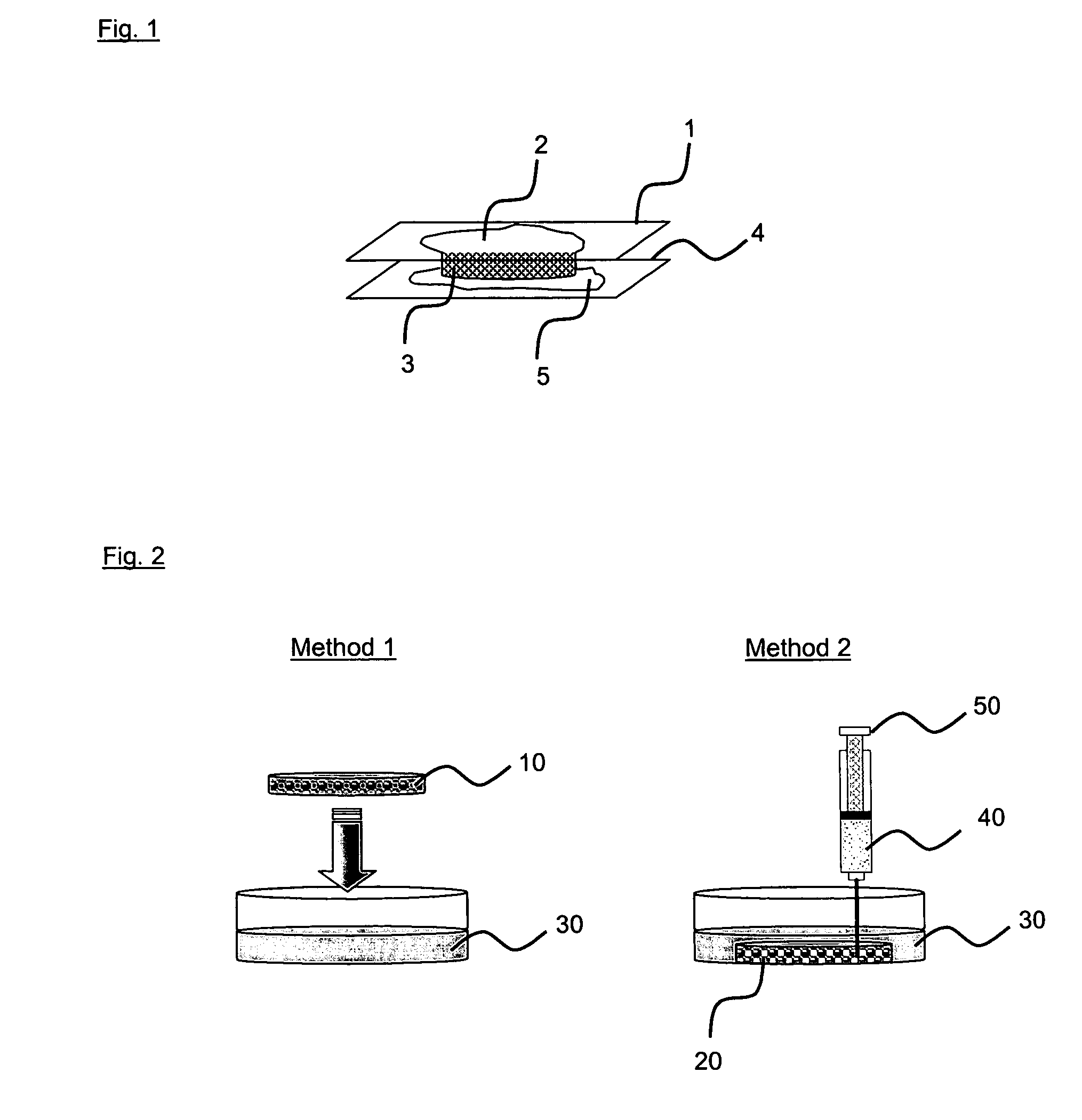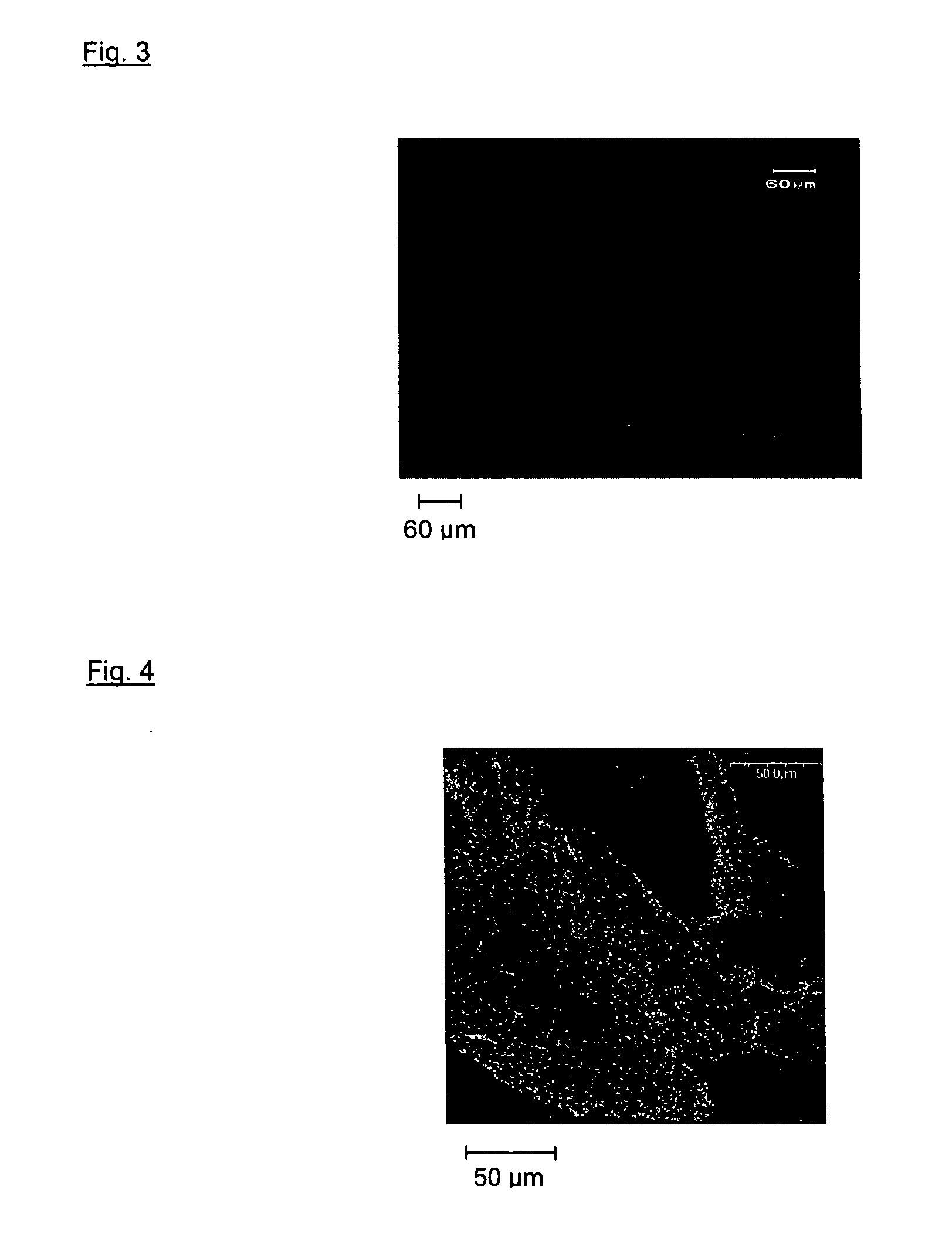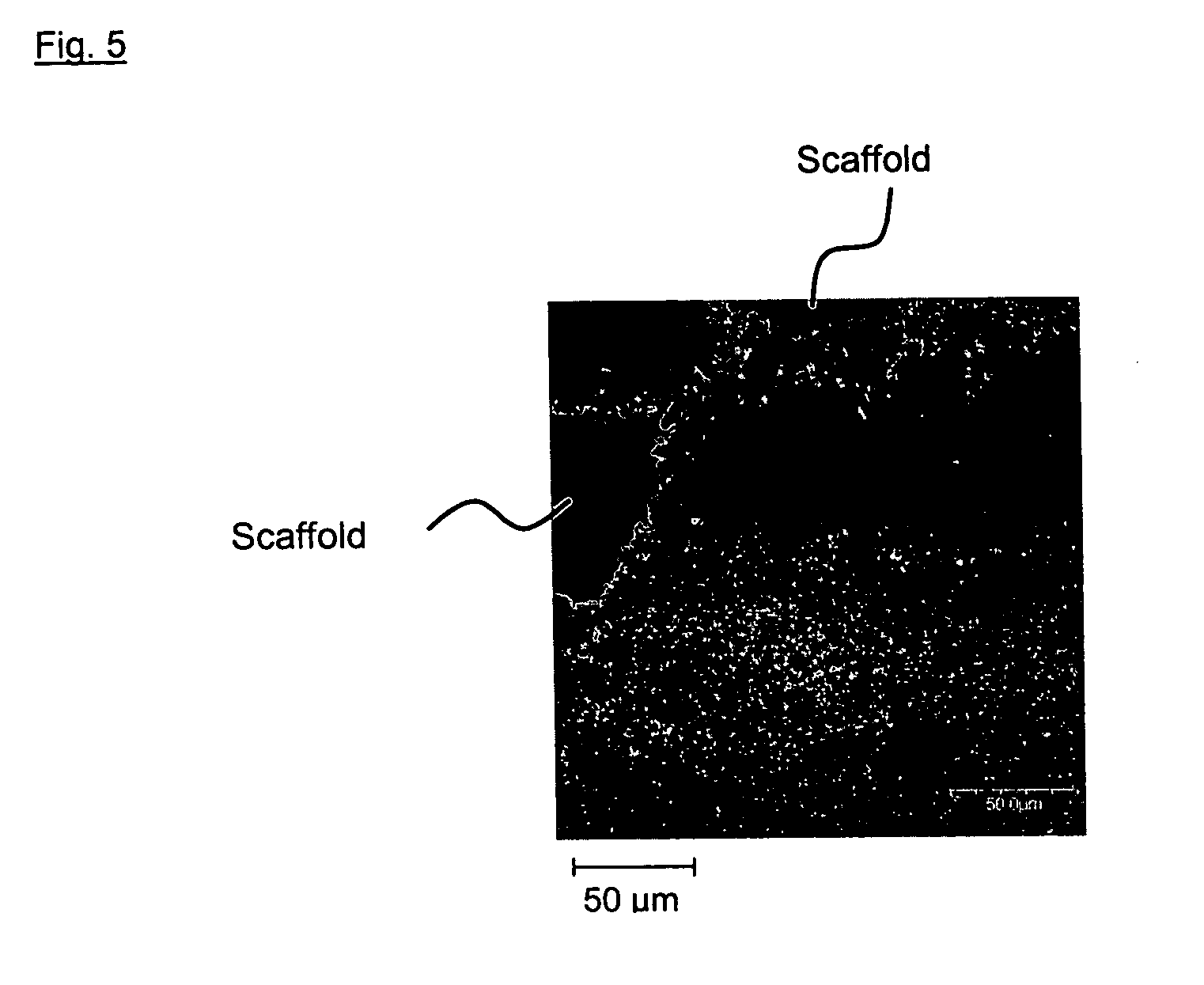Encapsulation of cells in biologic compatible scaffolds by coacervation of charged polymers
a cell and charged polymer technology, applied in the field of tissue engineering, can solve the problems of low initial cell number, low uniformity within the scaffold, and ineffective seeding, and achieve the effect of not being washed out of the scaffold so easily
- Summary
- Abstract
- Description
- Claims
- Application Information
AI Technical Summary
Benefits of technology
Problems solved by technology
Method used
Image
Examples
example 1
[0062] The following example describes the encapsulation of goat bone marrow stroma cells (BMSCs) into Cytomatrix™ scaffolds (Cytomatrix LLC, Woburn, Mass.) by the complex coacervation between modified collagen and terpolymer of hydroxylethyl methacrylate-methyl methacrylate-methyl acrylic acid (HEMA-MMA-MM).
[0063] In this example, the Cytomatrix™ scaffold is used as a three dimensional cell growth scaffold to assess the feasibility of encapsulating goat BMSCs by complex coacervation. The Cytomatrix™ scaffold is composed of biocompatible niobium-coated carbon with a thickness of about 3 mm and a diameter of about 9 mm. It has a regular, dodecahedral inner structure with continuous interconnected pores with a porosity of greater than 90%. Therefore, the Cytomatrix™ scaffold provides a microenvironment mimicking that of the bone marrow. Hence, the biomimetic three-dimensional microenvironment of the Cytomatri scaffold should be suitable for the proliferation of the goat BMSCs.
[0064]...
example 2
[0073] The following example describes the comparative experiments that are carried out to compare different methods of encapsulating cells in Cytomatrix™ scaffolds with charged polymers.
[0074] In this example, it is attempted to fill the three dimensional Cytomatrix scaffolds with 1.5 mg / ml of modified collagen and encapsulate the scaffold using 2.5% of terpolymer solution. Modified collagen and terpolymer solution are obtained as described in Example 1. In addition to the method of the present invention (FIG. 1), two further methods are used and described as follows (FIG. 2):
Method 1
[0075] 100 μl of 1.5 mg / ml of modified collagen is aliquoted into the Cytomatrix™ scaffold (10) and the scaffold is gently dipped into a reservoir of 2.5% terpolymer solution (30).
Method 2
[0076] The Cytomatrix™ scaffold (20) is first placed into a reservoir of 2.5% terpolymer solution (30). 1.5 mg / ml of modified collagen (40) is then delivered into the middle of the scaffold using a syringe with...
example 3
[0080] The following experiment describes the encapsulation of pig bone marrow stroma cells (BMSCs) into Cytomatrix™ scaffolds at different collagen-terpolymer contact times.
[0081] In this example, the density of the modified collagen-terpolymer complex is modulated by varying the contact time of the oppositely charged polymers used in the method of the present invention. The modified collagen and terpolymer as described in Example 1 are used.
[0082] For seeding pig BMSCs into scaffolds by encapsulation 1×106 cells / ml of pig BMSCs are mixed with 1.5 mg / ml of modified collagen and 100 μl of the cell-collagen mixture is seeded into each scaffold as described in Example 1. Encapsulation of the cells in the scaffold is carried out as described in Example 1 using different contact time (1, 5, 10, 20 and 30 min). The scaffolds are then transferred into spinner flasks for dynamic culturing at 2 rpm for 2 weeks.
[0083] Controls are established by conventional static seeding. 1×106 cells / ml...
PUM
| Property | Measurement | Unit |
|---|---|---|
| diameter | aaaaa | aaaaa |
| diameter | aaaaa | aaaaa |
| thickness | aaaaa | aaaaa |
Abstract
Description
Claims
Application Information
 Login to View More
Login to View More - R&D
- Intellectual Property
- Life Sciences
- Materials
- Tech Scout
- Unparalleled Data Quality
- Higher Quality Content
- 60% Fewer Hallucinations
Browse by: Latest US Patents, China's latest patents, Technical Efficacy Thesaurus, Application Domain, Technology Topic, Popular Technical Reports.
© 2025 PatSnap. All rights reserved.Legal|Privacy policy|Modern Slavery Act Transparency Statement|Sitemap|About US| Contact US: help@patsnap.com



